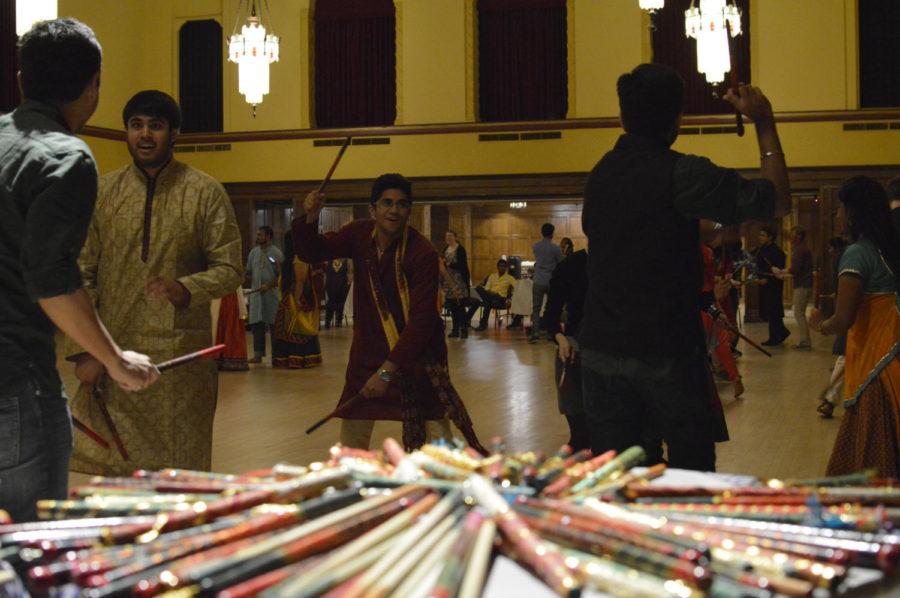Dandiya Night celebration brings eastern culture to Iowa State
October 18, 2015
Memorial Union was ablaze with sound and color Saturday when it hosted Dandiya Night celebration, an event of dance and music put on by the ISU Indian Students’ Association.
Attendees of the event learned the importance of the Dandiya Dance, a traditional Indian dance.
“[Dandiya] is generally observed in the festivities of Navratri, which is an Indian festival of nine day and nine nights,” said Nancy Manchanda, graduate in computational biology and public relations officer for the Indian Student’s Association.
Sohail Suryavanshi, senior in electrical engineering, said Navratri itself translates to ‘Nav,” which means nine in Hindi and “Ratri” means night.
The night featured two forms of dance, Garba and Dandiya. Both dances involve moving in a circular formation in relation to the music being played, and Garba is performed with claps.
Dandiya, which is Hindu for sticks and was the featured event, incorporates brightly colored sticks as dancers move from partner to partner, striking each other’s sticks inside two circles.
Dandiya is rooted in the culture of Gujarat, India, and uses movement to recreate the struggle between the Hindu goddess Durga and the demon Mahishasura.
“The demon had the power to not be killed by a male and had to be slain by a female,” said Vivek Lawana, graduate assistant in biomedical sciences and former Indian Students’ Association president and the night’s dance. “Because of this, females are praised during this [festival]. They have the power over the nine days.”
Women during the nine days can be seen sporting colorful dresses that are known as Choli and Ghagra, accessorized with vibrant jewelry and designs.
The Dandiya sticks symbolize the swords used by Durga to fight the demon and the striking of sticks acting as the combat between the two.
A focus for the Indian Students’ Association when creating the event was approachability and ease of entry.
”It’s basic steps that we teach, Manchanda said. “It can get complex, but not all Indian people know about this dance.”
Dandiya is primarily a Western Indian dance, meaning people to the south and east may not be aware or familiar with the dance.
”Even those who don’t know the dance can come to our events,” Manchanda said. “Some people think, ‘Oh, I don’t know the dance,’ but that’s OK, we can teach you,” Manchanda said.
Lawana said the participation made the event even better.
“Overall, it was a very good turnout,” Lawana said.” I’m happy because everyone danced. I wasn’t sure if we’d be able to get through all three dances together but we did.”
As a part of the accessibility goal for the dance some students found it to be an entirely new cultural experience.
”It was great after doing many rounds of Garba,” said Payas Awadhutkar, graduate in electrical and computer engineering. “The enthusiasm and energy in the room was fantastic.”







